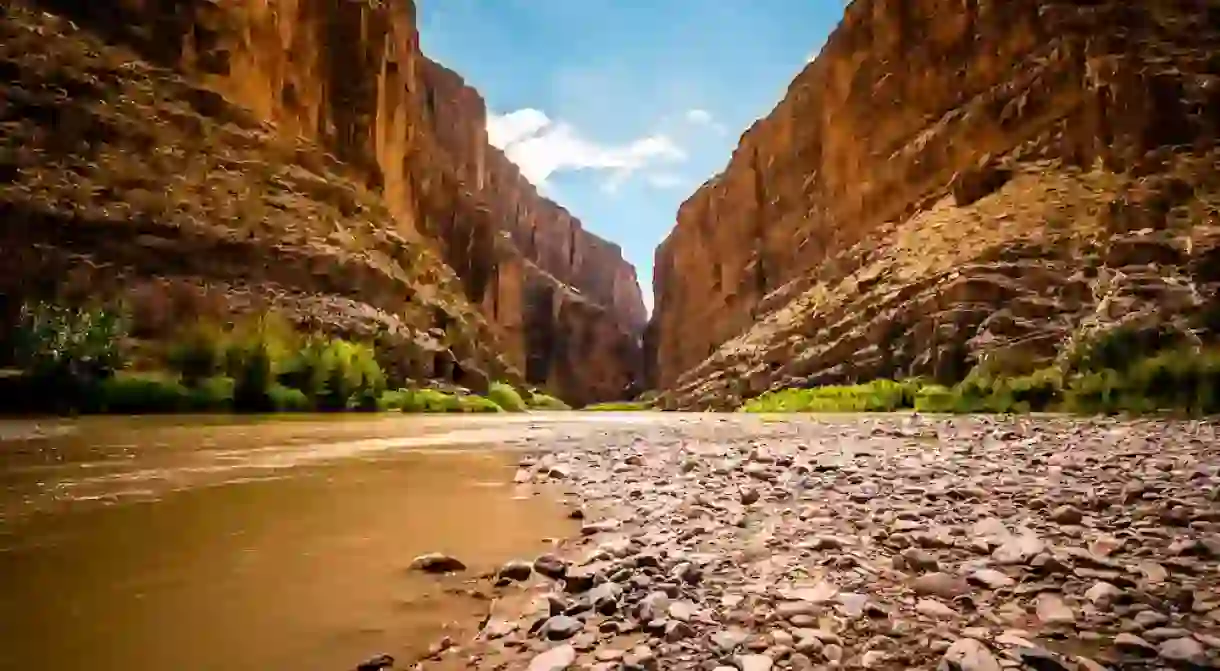The Best National Parks and Sites in Texas

While there are only two national parks in Texas, there are numerous National Park Service-protected sites, forests, monuments, and more. Here are five of the best in the state.
Big Bend National Park
With 801,163 acres, Big Bend National Park sprawls across far West Texas and includes the entire Chisos mountain range and a large portion of the Chihuahuan Desert. The Rio Grande River runs through the park and provides rafting, canoeing, and kayaking. Stargazing is also a popular activity, as Big Bend has the least light pollution of any other national park in the lower 48 states. Hikers can enjoy more than 150 miles of trails and hike in the desert, mountains, or along the river. The vast ecosystems in Big Bend provide habitats for more than 450 species of birds, 75 species of mammals, 56 species of reptiles, and 11 species of amphibians. Larger mammals seen at the park include deer, coyotes, mountain lions, javelinas, and black bears. Other activities include horseback riding, biking, and bird watching. The park has lodging at Chisos Mountains Lodge (72 rooms) and numerous campsites.

Guadalupe Mountains National Park
Straddling the Texas-New Mexico line, the Guadalupe Mountains National Park protects the world’s most extensive Permian fossil reef – the Guadalupe Mountains were once underwater – along with the four highest peaks in Texas. Hikers enjoy this park for its 80-plus miles of hiking trails. Hiking along the Guadalupe Peak trail takes you to Guadalupe Peak, known as the “Top of Texas,” at 8,751 feet above sea level. The park is usually full of fall colors from mid-October through mid-November, and the park’s Fall Colors Report gives updates on when leaf peeping is available. Other activities include birding and backpacking, and primitive camping is available on a first come, first served basis.
San Antonio Missions Historic National Park
San Antonio’s missions – including the Alamo – became UNESCO World Heritage sites in 2015. The four southernmost Spanish colonial missions – San José, San Juan, Concepción, and Espada – are part of the San Antonio Missions National Historical Park. These missions help tell the story of how natives survived by giving up their traditional lives and learning to become Spanish, which meant accepting a new religion and learning a new way of life. All four of these missions are about 2.5 miles apart from one another, and the Missions Hike & Bike Trail connects them all, plus the Alamo, creating a great entryway to explore the rest of San Antonio. Guided tours provide information on 18th-century Spanish colonial living here, and all four missions still hold regular church services. Each mission has its own unique feel, and all provide different stories from this era.
Lyndon B. Johnson National Historical Park
While 14 miles separate the two areas of this park, both give insight into the life of Lyndon B. Johnson, the 36th president of the U.S., who was born and died in Texas. In Johnson City, visitors can view LBJ’s boyhood home where he lived from the age of five until his high school graduation in 1924. The home is still furnished in the 1920s period and depicts the rural Texas lifestyle of almost a century ago. Johnson City also has the Johnson Settlement, where LBJ’s grandfather and great-uncle established cattle droving headquarters in the 1860s. This site has their log cabin, barns, cooler house, and windmill. Fourteen miles west of Johnson City, in Stonewall, is the LBJ Ranch, where LBJ spent a lot of his life. Visitors can drive through the ranch and take a guided tour of the ranch house, known as the Texas White House, which offers interesting information about his life during his presidency. A great time to go is during spring, when the ranch is abundant with blooming Texas wildflowers.

Big Thicket National Preserve
Not only is the Big Thicket a national preserve, but since 1981, it’s also been a UNESCO-designated International Biosphere Reserve. The Big Thicket National Preserve protects numerous habitats in East Texas and includes nine different ecosystems from pine forests to bayous covered with towering cypress trees. The incredible diversity of this preserve can be seen through 40 miles of trails and more than 113,000 acres of land. Canoeing and kayaking are also popular, as miles of creeks, bayous, and river flow through the preserve. Wildlife is plentiful, and common predators are river otters, muskrat, alligators, and bald eagles.
Did you know – Culture Trip now does bookable, small-group trips? Pick from authentic, immersive Epic Trips, compact and action-packed Mini Trips and sparkling, expansive Sailing Trips.













